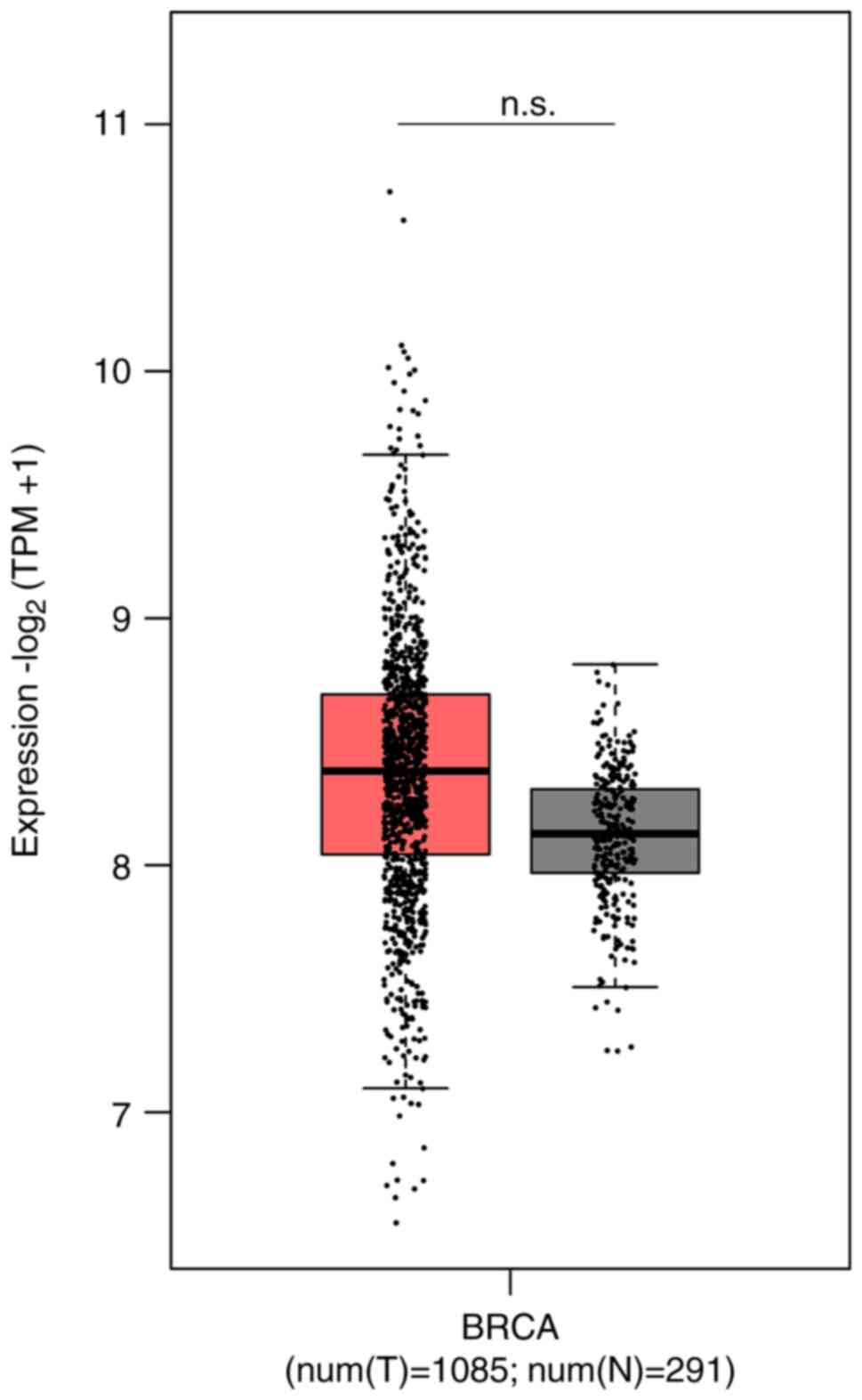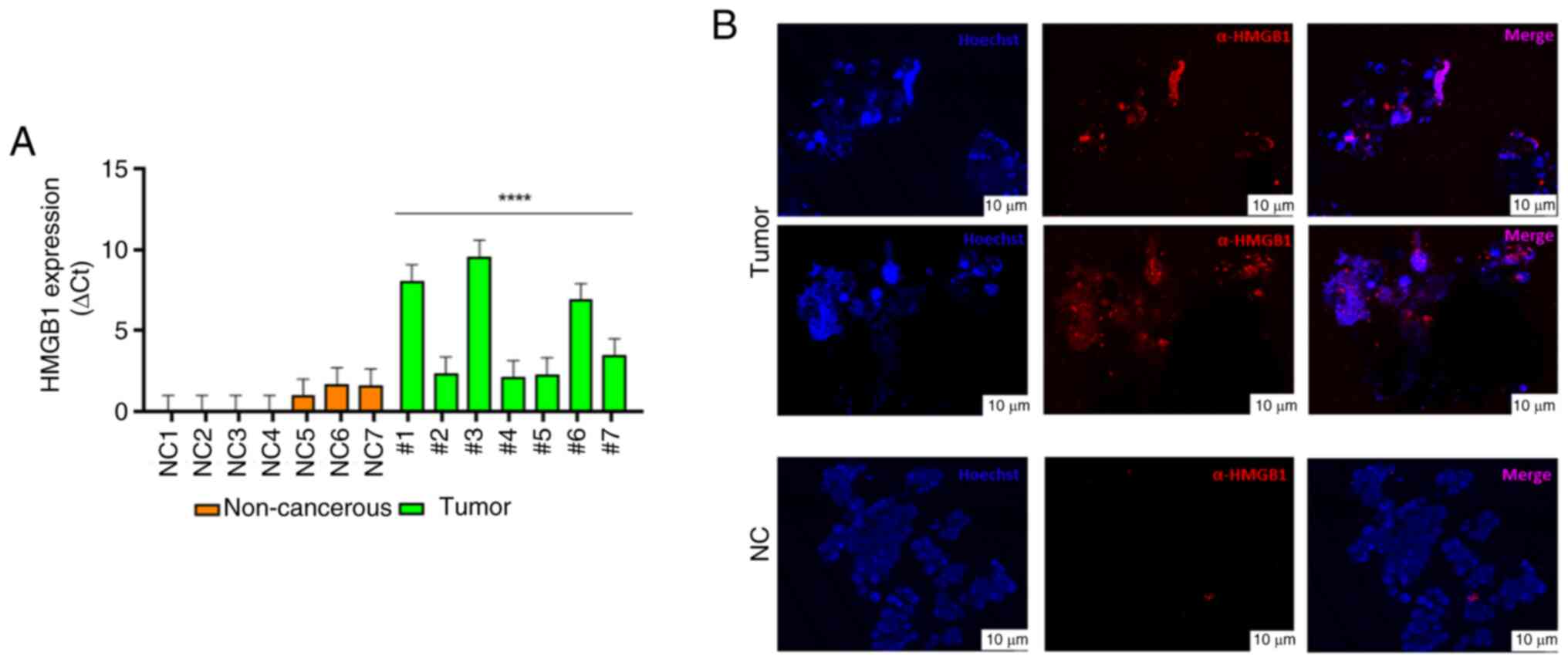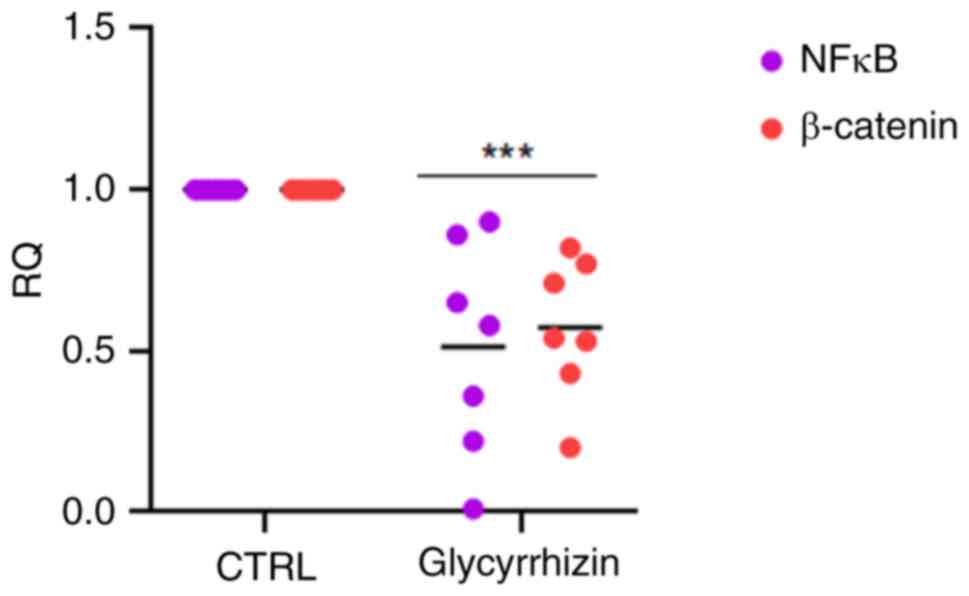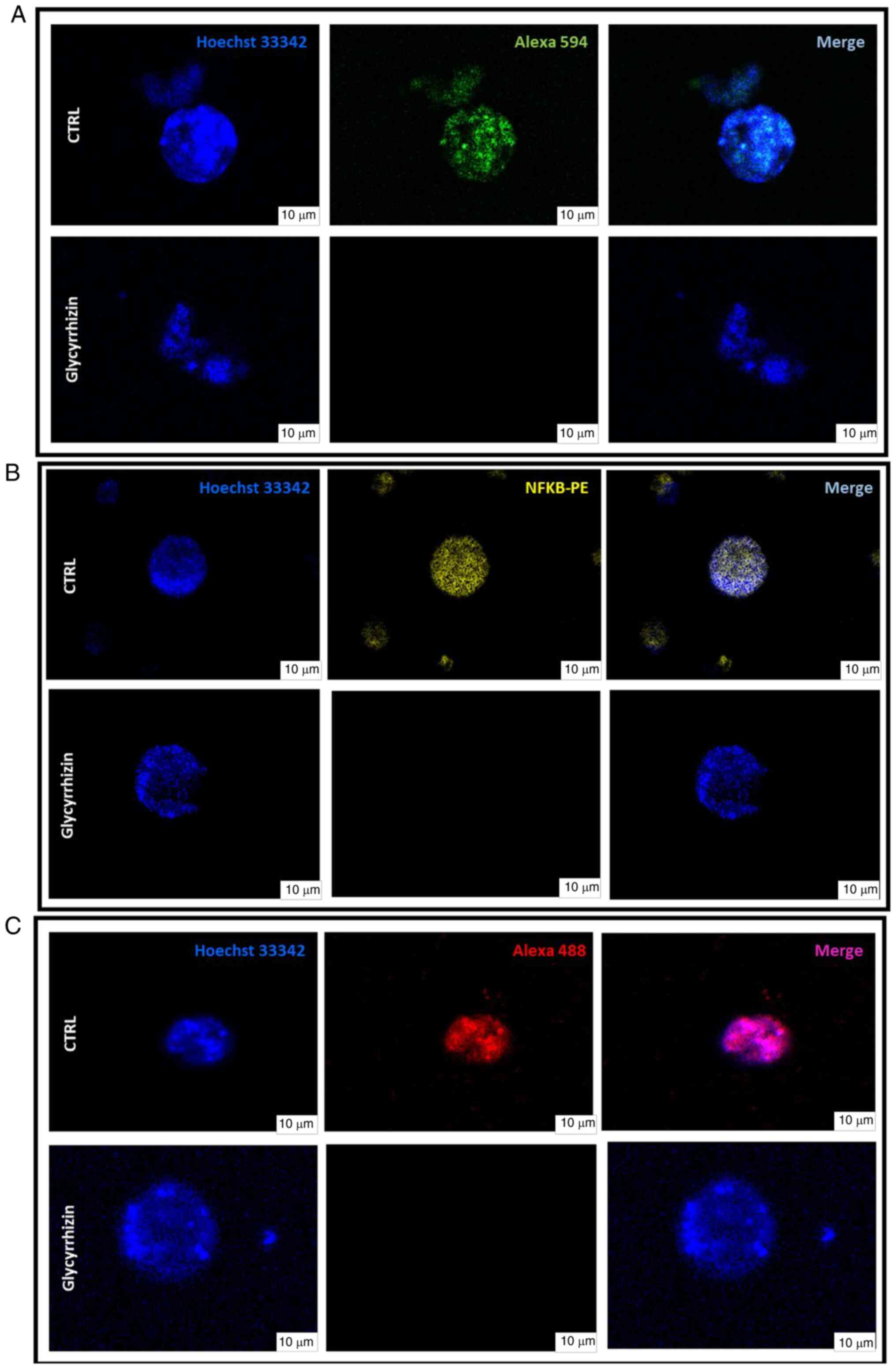|
1
|
Zeng X, Liu C, Yao J, Wan H, Wan G, Li Y
and Chen N: Breast cancer stem cells, heterogeneity, targeting
therapies and therapeutic implications. Pharmacol Res.
163:1053202021. View Article : Google Scholar : PubMed/NCBI
|
|
2
|
Leone I, Santoro J, Soricelli A, Febbraro
A, Santoriello A and Carrese B: Triple-negative breast cancer EVs
modulate growth and migration of normal epithelial lung cells. Int
J Mol Sci. 25:58642024. View Article : Google Scholar : PubMed/NCBI
|
|
3
|
Arnold M, Morgan E, Rumgay H, Mafra A,
Singh D, Laversanne M, Vignat J, Gralow J, Cardoso F, Siesling S
and Soerjomataram I: Current and future burden of breast cancer:
Global statistics for 2020 and 2040. Breast. 66:15–23. 2022.
View Article : Google Scholar : PubMed/NCBI
|
|
4
|
Obeagu E and Obeagu G: Breast cancer: A
review of risk factors and diagnosis. Medicine (Baltimore).
103:e369052024. View Article : Google Scholar : PubMed/NCBI
|
|
5
|
Bianchi ME, Beltrame M and Paonessa G:
Specific recognition of cruciform DNA by nuclear protein HMG1.
Science. 243:1056–1059. 1989. View Article : Google Scholar : PubMed/NCBI
|
|
6
|
Starkova T, Polyanichko A, Artamonova T,
Tsimokha A, Tomilin A and Chikhirzhina E: Structural
characteristics of High-mobility group proteins HMGB1 and HMGB2 and
their interaction with DNA. Int J Mol Sci. 24:35772023. View Article : Google Scholar : PubMed/NCBI
|
|
7
|
Chen R, Zou J, Kang R and Tang D: The
redox protein High-Mobility group box 1 in cell death and cancer.
Antioxid Redox Signal. 39:569–590. 2023. View Article : Google Scholar : PubMed/NCBI
|
|
8
|
Lv G, Yang M, Gai K, Jia Q, Wang Z, Wang B
and Li X: Multiple functions of HMGB1 in cancer. Front Oncol.
14:13841092024. View Article : Google Scholar : PubMed/NCBI
|
|
9
|
He S, Cheng J, Feng X, Yu Y, Tian L and
Huang Q: The dual role and therapeutic potential of High-mobility
group box 1 in cancer. Oncotarget. 8:64534–64550. 2017. View Article : Google Scholar : PubMed/NCBI
|
|
10
|
Cai Z and Liu Q: Cell cycle regulation in
treatment of breast cancer. Adv Exp Med Biol. 1026:251–270. 2017.
View Article : Google Scholar : PubMed/NCBI
|
|
11
|
Chen G, Ward MF and Wang H: Extracellular
HMGB1 as a proinflammatory cytokine. J Interferon Cytokine Res.
24:329–33. 2004. View Article : Google Scholar : PubMed/NCBI
|
|
12
|
Dong Y, Ming B and Dong L: The role of
HMGB1 in rheumatic diseases. Front Immunol. 13:8152572022.
View Article : Google Scholar : PubMed/NCBI
|
|
13
|
Oh H, Choi A, Seo N, Lim J, You J and
Chung Y: Protective effect of glycyrrhizin, a direct HMGB1
inhibitor, on Post-contrast acute kidney injury. Sci Rep.
11:156252021. View Article : Google Scholar : PubMed/NCBI
|
|
14
|
Jain R, Hussein M, Pierce S, Martens C,
Shahagadkar P and Munirathinam G: Oncopreventive and
oncotherapeutic potential of licorice triterpenoid compound
glycyrrhizin and its derivatives: Molecular insights. Pharmacol
Res. 178:1061382022. View Article : Google Scholar : PubMed/NCBI
|
|
15
|
Chang H, Chen S, Wu C, Lu C and Yen G:
Glycyrrhizin attenuates the process of Epithelial-to-Mesenchymal
transition by modulating HMGB1 initiated novel signaling pathway in
prostate cancer cells. J Agric Food Chem. 67:323–3332. 2019.
View Article : Google Scholar
|
|
16
|
Mastroleo I: Post-trial obligations in the
declaration of helsinki 2013: Classification, reconstruction and
interpretation. Dev World Bioeth. 16:80–90. 2016. View Article : Google Scholar : PubMed/NCBI
|
|
17
|
Lee GY, Kenny PA, Lee EH and Bissell MJ:
Three-dimensional culture models of normal and malignant breast
epithelial cells. Nat Methods. 4:359–365. 2007. View Article : Google Scholar : PubMed/NCBI
|
|
18
|
Della Corte CM, Barra G, Ciaramella V, Di
Liello R, Vicidomini G, Zappavigna S, Luce A, Abate M, Fiorelli A,
Caraglia M, et al: Antitumor activity of dual blockade of PD-L1 and
MEK in NSCLC patients derived three-dimensional spheroid cultures.
J Exp Clin Cancer Res. 38:2532019. View Article : Google Scholar : PubMed/NCBI
|
|
19
|
DeRose YS, Gligorich KM, Wang G, Georgelas
A, Bowman P, Courdy SJ, Welm AL and Welm BE: Patient-derived models
of human breast cancer: Protocols for in vitro and in vivo
applications in tumor biology and translational medicine. Curr
Protoc Pharmacol. Chapter 14: Unit14. 232013.PubMed/NCBI
|
|
20
|
Mollica L, De Marchis F, Spitaleri A,
Dallacosta C, Pennacchini D, Zamai M, Agresti A, Trisciuoglio L,
Musco G and Bianchi ME: Glycyrrhizin binds to High-mobility group
box 1 protein and inhibits its cytokine activities. Chem Biol.
14:431–441. 2007. View Article : Google Scholar : PubMed/NCBI
|
|
21
|
Livak KJ and Schmittgen TD: Analysis of
relative gene expression data using real-time quantitative PCR and
the 2(−Delta Delta C(T)) method. Methods. 25:402–408. 2001.
View Article : Google Scholar : PubMed/NCBI
|
|
22
|
Tang Z, Kang B, Li C, Chen T and Zhang Z:
GEPIA2: An enhanced web server for large-scale expression profiling
and interactive analysis. Nucleic Acids Res. 47:W556–W560. 2019.
View Article : Google Scholar : PubMed/NCBI
|
|
23
|
Pourbarkhordar V, Rahmani S, Roohbakhsh A,
Hayes AW and Karimi G: Melatonin effect on breast and ovarian
cancers by targeting the PI3K/Akt/mTOR pathway. IUBMB Life.
76:1035–1049. 2024. View
Article : Google Scholar : PubMed/NCBI
|
|
24
|
Guangyao L, Yang M, Gai K, Jia Q, Wang Z,
Wang B and Li X: Multiple functions of HMGB1 in cancer. Front
Oncol. 14:13841092024. View Article : Google Scholar : PubMed/NCBI
|
|
25
|
Li C, Tang Z, Zhang W, Ye Z and Liu F:
GEPIA2021: Integrating multiple deconvolution-based analysis into
GEPIA. Nucleic Acids Res. 49:W242–W246. 2021. View Article : Google Scholar : PubMed/NCBI
|
|
26
|
Dudhatra G, Mody S, Awale M, Patel H, Modi
C, Kumar A, Kamani D and Chauhan B: A Comprehensive review on
pharmacotherapeutics of herbal bioenhancers.
ScientificWorldJournal. 2012:6379532012. View Article : Google Scholar : PubMed/NCBI
|
|
27
|
Pucci B, Kasten M and Giordano A: Cell
cycle and apoptosis. Neoplasia. 2:291–299. 2000. View Article : Google Scholar : PubMed/NCBI
|
|
28
|
Wang CM, Jiang M and Wang HJ: Effect of
NF-κB inhibitor on high-mobility group protein B1 expression in a
COPD rat model. Mol Med Rep. 7:499–502. 2013. View Article : Google Scholar : PubMed/NCBI
|
|
29
|
Kim M, Park S and Lee D: Glycyrrhizin as a
nitric oxide regulator in cancer chemotherapy. Cancers (Basel).
13:57622021. View Article : Google Scholar : PubMed/NCBI
|
|
30
|
Dholakia J, Scalise CB, Katre AA,
Goldsberry WN, Meza-Perez S, Randall TD, Norian LA, Novak L and
Arend RC: Sequential modulation of the Wnt/β-catenin signaling
pathway enhances Tumor-intrinsic MHC I expression and tumor
clearance. Gynecol Oncol. 164:170–180. 2022. View Article : Google Scholar : PubMed/NCBI
|
|
31
|
Scaffidi P, Misteli T and Bianchi ME:
Release of chromatin protein HMGB1 by necrotic cells triggers
inflammation. Nature. 418:191–195. 2022. View Article : Google Scholar : PubMed/NCBI
|















